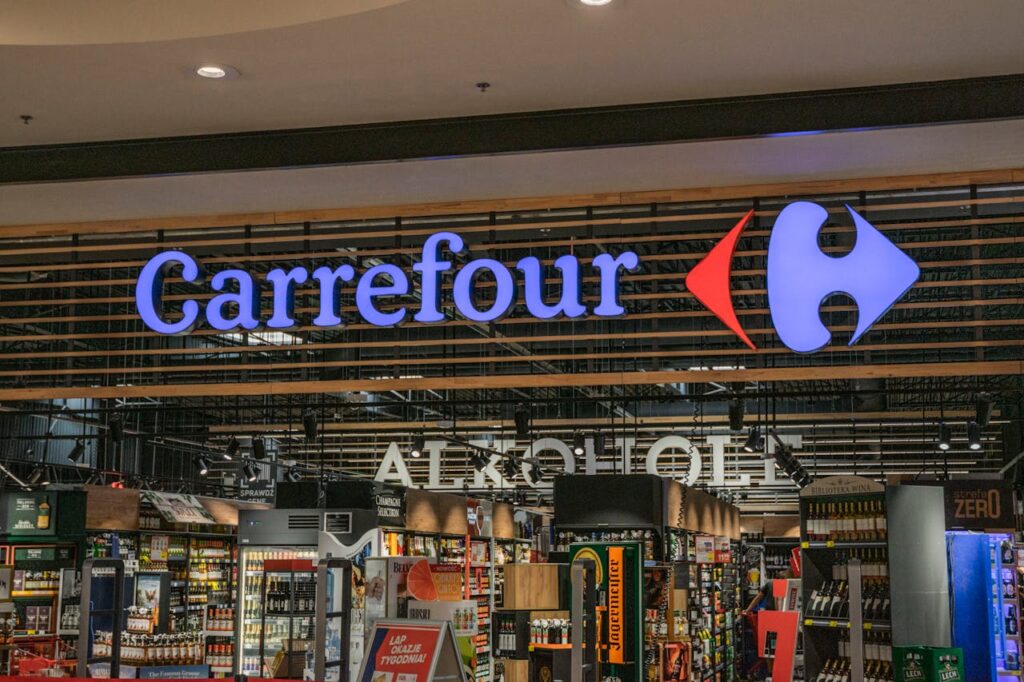The Power of Optimized Signage: Conveying the Transactional Idea at First Glance
Introduction
The Power of Optimized Signage: In an increasingly fast-paced and saturated world, where consumers are bombarded by thousands of advertisements daily, standing out is not just a luxury—it’s a necessity. One of the most overlooked yet incredibly powerful tools for capturing attention and driving action is an optimized sign that reflects a transactional idea instantly. Whether it’s a billboard, storefront sign, digital display, or event banner, the signage must communicate what you offer and why it matters without the need for further explanation.
The transactional idea—what the customer gets in return for their time, money, or attention—must be immediately visible and easily understood. When this is done effectively, the sign does more than attract attention; it creates a mental link between desire and solution, prompting a swift response from the viewer.
In this article, we’ll delve deeply into:
- What a “transactional idea” means
- Why first-glance recognition matters
- Psychological principles behind effective signage
- Design elements that make or break a sign
- Real-world case studies
- Practical tips for creating optimized signs
- Mistakes to avoid
- How digital transformation affects sign optimization
- And how to test and refine signage for maximum results
Let’s uncover the science and art of signage that truly sells.

Understanding the Transactional Idea
The transactional idea is the core promise or value exchange being made to the consumer. It answers a simple question:
Examples of transactional ideas:
- “50% off all sneakers—Today Only” (savings)
- “Get a Free Quote in 30 Seconds” (convenience + speed)
- “Lose Weight Without the Gym” (solution without pain)
- “Buy One, Get One Free” (value)
The more direct, emotionally resonant, and relevant this promise is, the more effective the sign will be. It should instantly communicate the benefit and elicit a response.
Why first glance recognition is crucial
You have less than three seconds to capture someone’s attention with a sign—whether they’re walking, driving, or scrolling. That first glance determines whether the sign succeeds or fails.
Key Reasons First-Glance Recognition Matters:
- Cognitive Economy:
People don’t want to work to understand an ad. They skim, scan, and move on. - Decision Fatigue:
The more effort it takes to interpret a message, the less likely a decision will be made. - Impulse Influence:
Many purchasing decisions are made impulsively, driven by emotional recognition. - High Competition:
A competing sign or visual may steal the viewer’s attention within seconds.
A well-optimized sign doesn’t ask the viewer to read or think—it shows them what’s in it for them immediately.

The Psychology Behind Effective Signage
Understanding how people perceive and process visuals is essential to creating effective signage. Let’s explore several psychological principles at play.
1. Visual Hierarchy
Our eyes follow a predictable path:
- Headline/Primary Message
- Supporting Visual
- Secondary Text
- Call to Action
Your sign must be designed in this order, leading the eye naturally.
2. Gestalt Principles
Humans instinctively seek patterns and meaning. Using the Gestalt principles—like proximity, similarity, figure-ground, and closure—ensures your design is visually cohesive and instantly understood.
3. Dual Coding Theory
This theory states that people remember information better when it’s presented with both words and images. So, a strong visual tied to the transactional idea (e.g., a burger for a fast food ad) boosts comprehension and retention.
4. Color Psychology
Colors evoke emotions and associations:
- Red: urgency, action
- Blue: trust, calm
- Green: health, eco-friendliness
- Black: luxury, power
Use color intentionally to align with your message and brand.
Key Design Elements That Reflect Transactional Ideas
To make your sign instantly transactional, these design elements are critical:
1. Clear, Large Typography
Your main message should be readable from a distance. Avoid fancy fonts that reduce legibility.
2. Bold, Benefit-Driven Headlines
Use active words and numbers when possible:
- “SAVE 30% TODAY”
- “FREE SHIPPING ON ALL ORDERS”
- “INSTANT LOANS – NO PAPERWORK”
3. Relatable Imagery
Use images that emotionally and visually reinforce the transaction:
- Smiling families for insurance ads
- Overflowing shopping carts for sales
- Before/after shots for beauty or health products
4. Contrast and Space
Whitespace helps isolate your core message and make it pop. High contrast between text and background ensures readability.
5. Call to Action
Even if it’s non-clickable, your sign should end with a strong CTA:
“Visit Today,” “Scan the QR Code,” “Call Now,” “Shop Here.”
Real-World Examples: Success and Failure
Success: McDonald’s “Drive Through Open Late”
- Simple words
- Nighttime image of fries glowing
- Clear benefit: late-night hunger solution
- Emotional appeal: comfort food, convenience
Failure: Local Insurance Banner
- Too many words
- Poor contrast (white text on pale blue)
- Vague promise (“Protect what matters”)
- No clear CTA or benefit
Success: Planet Fitness “$10/Month – No Commitment”
- Price upfront
- Addressing a common objection (commitment)
- Simple, clean design
- immediate transactional clarity
The Digital Age: Static Signs vs. Digital Displays
While static signs (banners, window vinyls, billboards) remain vital, digital signage offers dynamic advantages:
- Animation to highlight key benefits
- A/B testing of messages
- QR codes linking directly to transactional actions
- Scheduled content rotation based on time/day
Yet, even digital signs must adhere to instant recognition. A looping animation that only gets to the offer at the 5-second mark fails to capture the hurried viewer.
Mistakes to Avoid in Sign Optimization
- Vague Messaging
- Avoid fluff like “Quality You Can Trust” unless backed by a specific offer or proof.
- Too Much Text
- If it takes more than five seconds to read, it’s too much.
- Inconsistent Branding
- Your fonts, colors, and tone should match your brand identity.
- Ignoring Context
- A beach ad saying “Get Ready for Winter!” fails to connect with its audience.
- No Focal Point
- Without a dominant element, the eye doesn’t know where to look.
How to Craft a Sign That Converts
Here’s a step-by-step guide:
Step 1: Identify Your Core Transactional Idea
- What exactly are you offering?
- Why should someone act now?
Step 2: Boil It Down to a One-Line Message
Think billboard-level clarity. Example:
- “Teeth Whitening—Only $49 This Week”
- “Get Paid to Drive – Apply Today”
Step 3: Choose High-Contrast Colors
- Make the headline pop
- Ensure visibility in different lighting conditions
Step 4: Add a Relevant Visual
- Prefer photography to abstract art unless branding requires otherwise.
Step 5: Include a Strong Call to Action
- Must be actionable and time-sensitive if possible
Step 6: Design for the Environment
- Street signs need larger fonts than store window signs
- Digital signs should assume no audio and a short dwell time.
Testing and Refining Your Sign
Even after installation, your sign is not finished. Optimize it continuously.
Methods:
- A/B Testing: Especially with digital signs
- Heat Mapping: For signs in-store or online
- Customer Feedback: Ask what they noticed or remembered
- Conversion Tracking: Did visits or sales increase after installation?
Conclusion: Your Sign is Your Silent Salesperson
An optimized sign that reflects the transactional idea at first glance is not just decoration—it’s communication at its most efficient form. It speaks when you’re not there. It pitches your offer 24/7. It convinces, converts, and commands attention in a chaotic world.
If your signage can answer the viewer’s question—“What’s in it for me?”—within seconds, you’ve won half the battle. Combine this with smart design, emotional appeal, and context-aware messaging, and your sign becomes a powerful business asset.
So the next time you’re designing or approving signage, ask yourself:
- Does this reflect the transaction clearly?
- Will a stranger understand this in two seconds?
- Would this make you stop and take action?
If the answer is yes, you’ve created more than a sign—you’ve created a trigger for human behavior.

